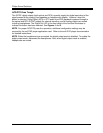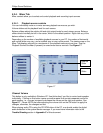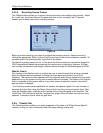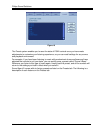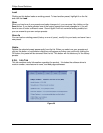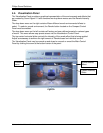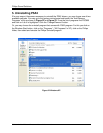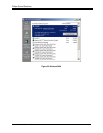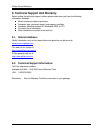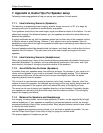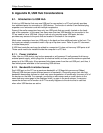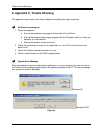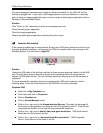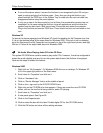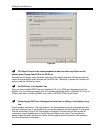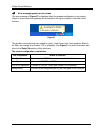
Philips Sound Solutions
PSC805 Aurilium™ Sound Processor Users Guide 36
8. Appendix B, USB Hub Considerations
8.1. Introduction to USB Hub
A hub is a USB device that uses one USB port for connection to a PC and typically provides
four additional ports for connection to USB devices. The function is similar to an electrical plug
expander or an extension cord with multiple receptacles.
Some of the earlier computers have only two USB ports that are usually located on the back-
side of the computer. In this case if we have more than two USB devices for connection to the
PC we need to use a USB hub. Using a hub not only provides more USB ports, but also
provides easy access to the ports that are located in the back of the computer.
Most newer computers have two USB ports in the back and two additional ports in the front. The
front ports are usually concealed under a flip up or flip down cover. Refer to your PC document
to locate these ports.
A USB host controller card may be added to a computer if it does not have any USB ports at all.
These cards need to be installed inside the computer in a PCI slot.
8.1.1. Power Limitation
Hubs, like any USB device, may be bus-powered or self-powered. A self-powered hub has an
external power supply, which plugs into an electrical outlet, and can provide maximum specified
power to all its USB ports. A bus-powered hub draws power from the root USB port, and thus, it
has limited power available to the connecting USB devices.
8.1.2. Bandwidth Limitation Issues
Each USB port on the PC has a maximum bandwidth of 12 Mega-bits per second (Mbps).
Different USB devices require different amount of bandwidth. Connecting more than two high
bandwidth-demanding devices to a hub may cause degradation of functionality for some or all of
the devices on that hub. For example, connecting a web camera and an audio device to the
same hub may cause gaps in the displayed video, or gaps in the audio stream. It may even
cause the devices not to function at all. This usually happens to the device that is used last
when other USB devices are active.



